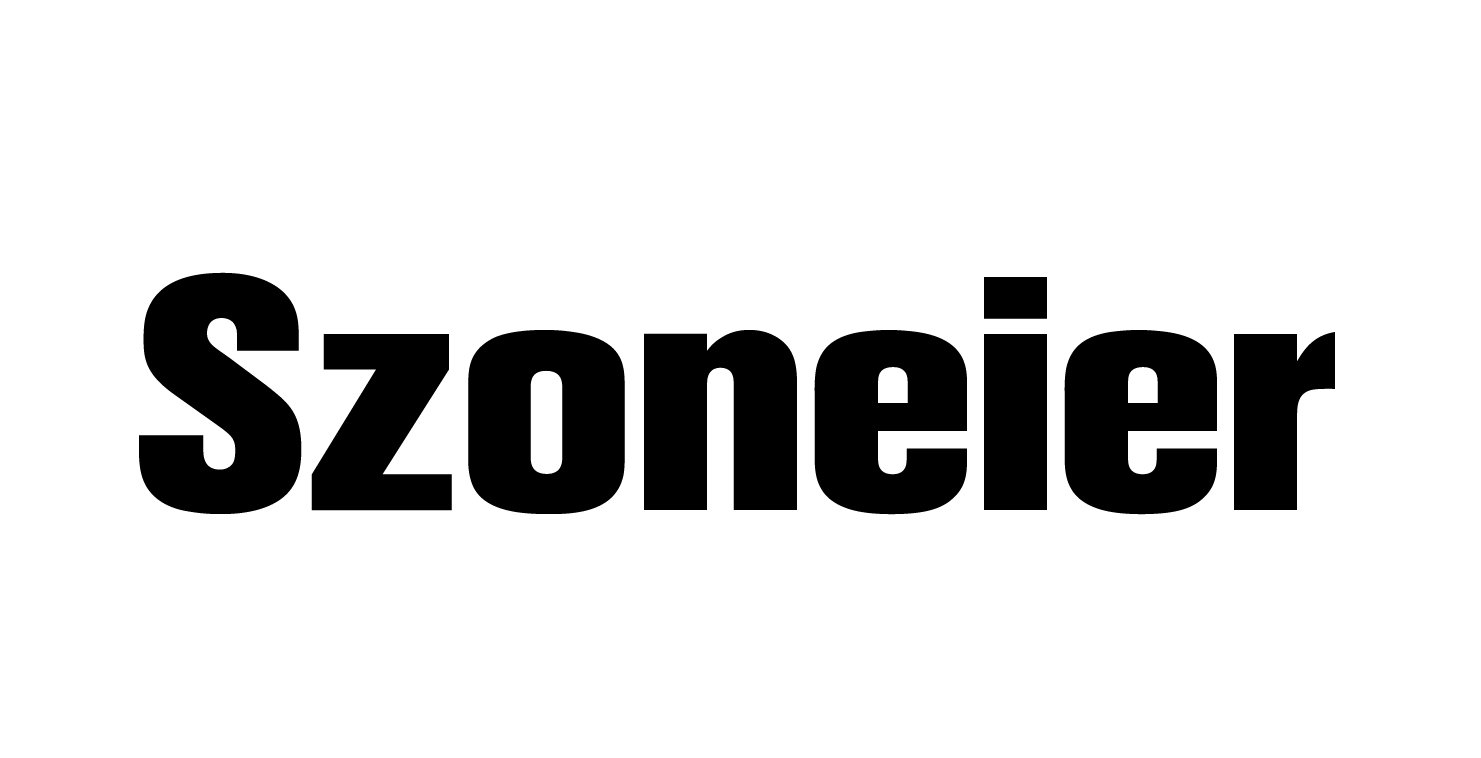Choosing the right fabric for demanding industrial applications can make or break a product. Whether you’re sourcing material for protective covers, tactical gear, heavy-duty bags, or tent structures, the two most debated options are canvas and nylon. Each material brings its own set of strengths and weaknesses, but the real decision comes down to performance under stress, environmental adaptability, lifecycle cost, and application-specific priorities.
Canvas is better for heavy-duty applications that require breathability, abrasion resistance, and eco-friendliness, while nylon performs better in lightweight, waterproof, and high-tension environments. The choice depends on usage context, not just material strength.
What works well for outdoor shelters may not suit technical gear bags. A vintage canvas tarp might outlast a plastic-based alternative—but only if it’s treated properly. Conversely, a nylon harness can handle higher load without weighing you down, but what happens under UV exposure or near flame? Let’s explore these fabrics beyond surface appearances.
To begin, we must define what they really are—and what sets them apart from the start.
What Are the Key Differences Between Canvas and Nylon Materials?
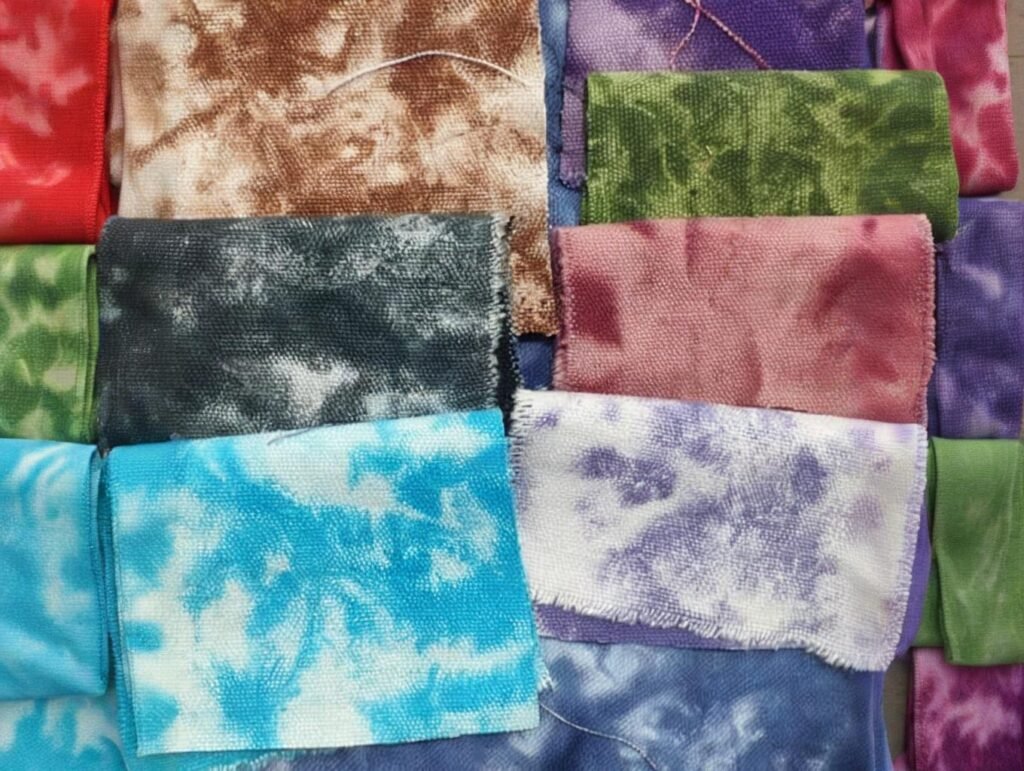
Canvas and nylon, though both strong and versatile fabrics, have distinct differences in terms of composition, texture, durability, and application suitability. Their unique properties make them ideal for specific uses depending on the environment and demands of the task at hand. While canvas is traditionally associated with natural or blended fibers (like cotton or poly-cotton), nylon is a synthetic material derived from petroleum-based compounds that excels in specific technical applications.
Material Composition & Construction
The differences in composition largely influence how each fabric behaves in various use scenarios.
| Feature | Canvas Fabric | Nylon Fabric |
|---|---|---|
| Fiber Type | Cotton, poly-cotton, or linen blends | 100% synthetic (polyamide) |
| Weave Structure | Plain or duck weave (dense, thick) | Tight woven, filament-based (smooth) |
| Finish | Often waxed or PU-coated for water resistance | Typically pre-treated with durable finishes or laminated |
| Sustainability | Natural/recyclable (cotton); biodegradable | Petroleum-based, non-biodegradable, microplastic shedding |
Insight: Canvas is seen as the eco-friendly choice due to its natural origin (cotton) and biodegradability. In contrast, nylon, being synthetic, has a larger environmental footprint and is non-biodegradable, contributing to microplastic pollution when washed or worn down.
Texture and Feel
- Canvas: Has a coarse, matte texture that makes it durable and non-slippery. It “grabs” objects, which is ideal for heavy-duty applications like tool bags or outdoor gear.
- Nylon: A smooth, slick finish that feels light and shiny. It’s non-absorbent, which makes it effective in water-resistant applications but often gives it a cheaper feel in consumer products.
Use Case Profiles
Canvas and nylon each have their place based on use case needs, whether it’s for long-term wear in a rugged environment or high-performance use under extreme conditions.
| Use Profile | Canvas Suits | Nylon Suits |
|---|---|---|
| Structural Support | Tents, industrial wraps | Backpack frames, tactical gear straps |
| Visual Appeal | Outdoor furniture, tool bags | Sports gear, military load-bearing kits |
| Moisture Protection | Needs coating (wax, PU) | Naturally water-resistant or laminated |
| Strength Under Load | Moderate (depends on weave & finish) | Very high (filament strength) |
Real-World Insight:
SzoneierFabrics worked with a Southeast Asian camping gear brand that initially used nylon for their hiking duffels. The bags, though durable, felt too slick and noisy during use. After switching to 18 oz waxed canvas, the duffels gained a premium feel, better grip, and reduced noise—ideal for outdoor adventures. The trade-off was a minor loss of waterproofing, which was mitigated by a custom waterproof lining.
Key Conclusion: Canvas shines in premium, tactile products that demand long-lasting durability and eco-appeal, while nylon excels in technical, high-tension applications where water resistance and strength are paramount.
Which Fabric Offers Better Durability in Heavy-Duty Environments?
When discussing durability, it’s essential to understand that durability involves a combination of factors, including tear resistance, abrasion tolerance, UV stability, and long-term performance under stress.
Tensile & Tear Strength Comparison
While nylon offers higher tensile strength, canvas is particularly strong in abrasion resistance, which makes it ideal for static or rough-use environments. Canvas is also more flexible under tension, which prevents cracking or breaking under repeated stress.
| Test Type | Canvas (14 oz cotton/poly) | Nylon (1000D) |
|---|---|---|
| Tensile Strength (warp) | \~300–500 N | \~600–900 N |
| Tear Strength (warp) | \~40–60 N | \~90–120 N |
| Abrasion Resistance | High (thicker, rougher texture) | Medium (can wear faster on rough surfaces) |
Durability Consideration by Environment
Canvas and nylon each excel in different conditions. Understanding where and how the material will be used can determine the best fabric for the job.
| Condition Type | Better Material | Reason |
|---|---|---|
| Static Load & Scraping | Canvas | Wears slowly, patchable, no melting risk |
| High Tension or Impact | Nylon | Filament strength resists sudden force |
| Flame-Prone Zone | Canvas (FR-treated) | Natural fiber doesn’t melt; can be treated to be fire-safe |
| Waterlogged Zone | Nylon | Hydrophobic; holds strength when wet |
Case Study: A client producing tool pouches for electricians tested 12 oz duck canvas against 1000D nylon. While nylon withstood more tension from cord loops, canvas performed better in abrasion resistance, especially when dragged across rough concrete or exposed to sparks from grinding tools.
Sustainability Perspective
- Canvas: Degrades naturally over time and can be recycled or repurposed, which makes it the more sustainable option from an end-of-life perspective.
- Nylon: While extremely durable, nylon sheds microplastics during wear and washing, and it does not decompose over time, contributing to long-term environmental waste.
Durability Isn’t Just About Numbers
It’s not just about tensile strength or tear resistance—durability also means how the fabric wears over time, especially under real-world conditions.
- Canvas tends to wear gracefully—it softens and molds to the shape over time, increasing its character while maintaining utility.
- Nylon, on the other hand, tends to remain stiff and prone to damage if subjected to high friction, such as abrasive surfaces or constant tension.
In short, canvas might “break in” over time, while nylon stays strong and stiff until it eventually fails under significant stress.
Canvas vs. Nylon—Which Is Right for Your Needs?
Both canvas and nylon offer unique advantages depending on your product’s usage environment:
- Canvas is perfect for premium products that require abrasion resistance, eco-friendliness, and long-term wear in static or rough-use environments.
- Nylon shines in high-tension, high-stress applications where water resistance, UV stability, and strength under load are paramount.
When choosing between the two, it’s not about which material is inherently better—it’s about matching the fabric to your use case for optimized performance and durability.
SzoneierFabrics offers expert consulting and customized canvas solutions for all types of applications—from outdoor gear to heavy-duty industrial gear. Contact us today to discuss how we can help you select the perfect material for your specific needs, ensuring long-term sustainability, brand impact, and cost-effectiveness.
How Do Canvas and Nylon Perform Under Outdoor and Extreme Weather Conditions?
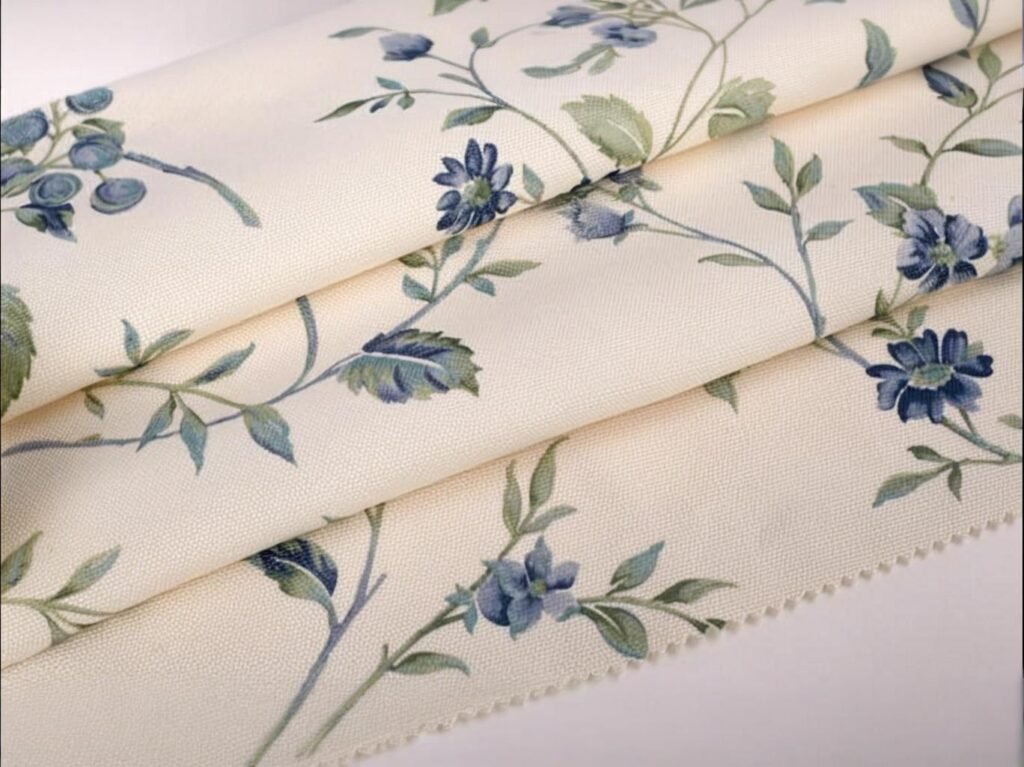
When it comes to outdoor and extreme weather performance, both canvas and nylon have their strengths, but they excel in different conditions due to their inherent material properties and the way they interact with the environment. Canvas, especially when treated, offers robust breathability, abrasion resistance, and temperature regulation. Nylon, on the other hand, is naturally water-resistant, lightweight, and excels in high-tension applications, but its lack of breathability and thermal sensitivity may limit its performance in certain outdoor environments.
Outdoor Performance Metrics Comparison
The key differences in performance under varying weather conditions primarily stem from moisture management, UV resistance, and heat resilience. Here’s how each material fares in specific outdoor conditions:
| Condition | Canvas Performance | Nylon Performance |
|---|---|---|
| Rain | Water-resistant only if treated (wax, PU) | Naturally water-resistant; can be fully waterproof |
| UV Exposure | Can fade/yellow if untreated; UV-treated holds | High-grade nylon is more UV stable, but still fades |
| Cold Temperatures | Maintains flexibility | Can stiffen and crack below -10°C (unless ripstop) |
| Heat / Flame | Can be FR treated; won’t melt | Melts under flame unless highly treated |
| Condensation Control | Breathable; reduces interior moisture | Non-breathable; may trap condensation |
Real-World Testing Insight:
An Australian utility provider tested tool roll-ups made from canvas and nylon in desert field conditions.
- Nylon Versions:
- Melted near hot surfaces (like metal tools).
- Stiffened overnight in the cold, becoming difficult to handle in the morning.
- Canvas Versions:
- While it absorbed some moisture, canvas remained pliable and breathable, maintaining comfort and flexibility despite extreme temperature fluctuations.
Moisture Management Considerations
Moisture management is critical in outdoor gear, particularly for applications like tents, tool covers, and protective clothing. Here’s a breakdown of how each fabric performs in moisture-prone environments:
| Factor | Canvas Advantage | Nylon Limitation |
|---|---|---|
| Vapor Permeability | High – Allows airflow and moisture escape | Low – Traps moisture, leading to condensation |
| Drying Time | Slower (especially untreated cotton canvas) | Faster (nylon sheds water quickly) |
| Mold/Mildew Risk | High if untreated, low if coated | Low, but trapped moisture can cause odor |
Canvas Advantage:
- Breathability makes canvas ideal for environments where condensation could lead to mold or discomfort, like sleeping bags, tents, and workwear worn in humid or rainy conditions.
- Nylon, though quicker to shed water, traps condensation on the inside, especially when used in sleeping bags or rain gear.
When to Choose Canvas for Outdoor Use
Canvas is ideal in hot, dry, abrasive environments or in situations where breathability is crucial. Key use cases include:
- Long-term exposure in hot, dry climates where temperature regulation is vital.
- Applications requiring breathability, such as awnings, tents, or tarps for agriculture.
- Rugged, vintage aesthetics for outdoor gear and workwear.
- High abrasion from wind, dust, or surface contact—perfect for gear bags and tool wraps.
When to Choose Nylon for Outdoor Use
Nylon excels in wet environments or where lightweight portability and water resistance are the most critical factors. It performs better in:
- High rainfall or frequent water submersion, making it ideal for gear bags or rain covers.
- Cold or sub-zero weather where nylon’s hydrophobic properties allow it to shed moisture quickly.
- Ultralight applications, such as hiking gear, camping backpacks, or rain gear where weight is a critical factor.
Is Nylon More Waterproof Than Canvas, and Does It Matter for Industrial Use?
Yes—nylon is more waterproof by nature than untreated canvas due to its synthetic fibers and tight weave structure. However, this doesn’t automatically make it the best choice in all industrial use cases. Both fabrics can be made waterproof through post-treatment coatings, but the waterproofing performance may vary depending on the coating type and the intended use of the product.
Hydrostatic Head Ratings (Waterproof Testing)
The hydrostatic head test measures how much water pressure a fabric can withstand before leaking. Fabrics with ratings above 1000 mm are considered waterproof.
| Fabric Type | Typical Hydrostatic Head Rating (mm) | Treatment Type |
|---|---|---|
| Untreated Cotton Canvas | 0–100 mm | None |
| Waxed Canvas | 200–500 mm | Wax Finish |
| PU-Coated Canvas | 500–1000 mm | Polyurethane Surface Coat |
| 420D Nylon (PU-coated) | 1000–1500 mm | Coated Inner Shell |
| 1000D Nylon (PVC-coated) | 2000–3000 mm | Full Waterproof Barrier |
Hydrostatic Head Insights:
- Canvas, even with treatments like wax or PU, may not reach the same hydrostatic head ratings as nylon. However, canvas is still adequate for waterproofing in many outdoor settings like tents, tarps, or gear bags, especially if the material is treated for breathability and temperature control.
- Nylon, especially with PVC or TPU coatings, offers superior waterproofing for applications like truck covers, flood barriers, or heavy-duty tarps where water exposure is extreme or prolonged.
Case Study – Tarp Covers for European Transport Company
A transport company required waterproof tarpaulin for machinery shipping across central Europe. We tested:
- 18 oz canvas with PU coating – Waterproof, breathable, and easy to repair if punctured.
- 1000D nylon with PVC backing – Higher waterproof rating but difficult to patch and prone to cracking in sub-freezing temperatures.
Final Decision: The client chose canvas because it performed well under variable weather, was easier to repair in the field, and offered better temperature flexibility.
Decision Factors for Waterproofing in Industry
| Industrial Requirement | Preferred Fabric Type | Reason |
|---|---|---|
| Full Waterproofing | Nylon with PVC or TPU | Complete water barrier, ideal for tarps and covers |
| Breathable Waterproofing | Waxed or PU canvas | Balanced moisture protection + ventilation |
| Reusability & Patching | Canvas | Easier to sew/repair in the field |
| Hot Tool Exposure | Canvas (non-melting) | Nylon may warp or melt under direct flame |
Pro Insight:
Waterproofing isn’t just about keeping moisture out; it’s also about managing what happens after water exposure. Nylon excels in extreme wet environments, but canvas performs better where comfort, strength, and repairability matter most. Canvas offers better performance in hot, dry climates, while nylon is optimal for consistent wet conditions or cold environments where water needs to be shed quickly.
Canvas vs. Nylon in Outdoor and Industrial Use
- Nylon provides superior waterproofing and high tensile strength, making it the go-to choice for environments requiring extreme water resistance and heavy-duty load-bearing.
- Canvas, with its breathability, abrasion resistance, and ability to be treated for fire and water resistance, offers a more natural and versatile solution in dry, hot, or abrasive conditions. Plus, its ability to be easily repaired makes it an excellent choice for long-term cost-effective use.
Ultimately, the decision hinges on your specific application needs: nylon for waterproofing and strength in high-stress, wet environments, and canvas for breathability, versatility, and repairability in rugged, dry, or hot conditions.
Are Canvas Fabrics More Eco-Friendly and Breathable Than Nylon?
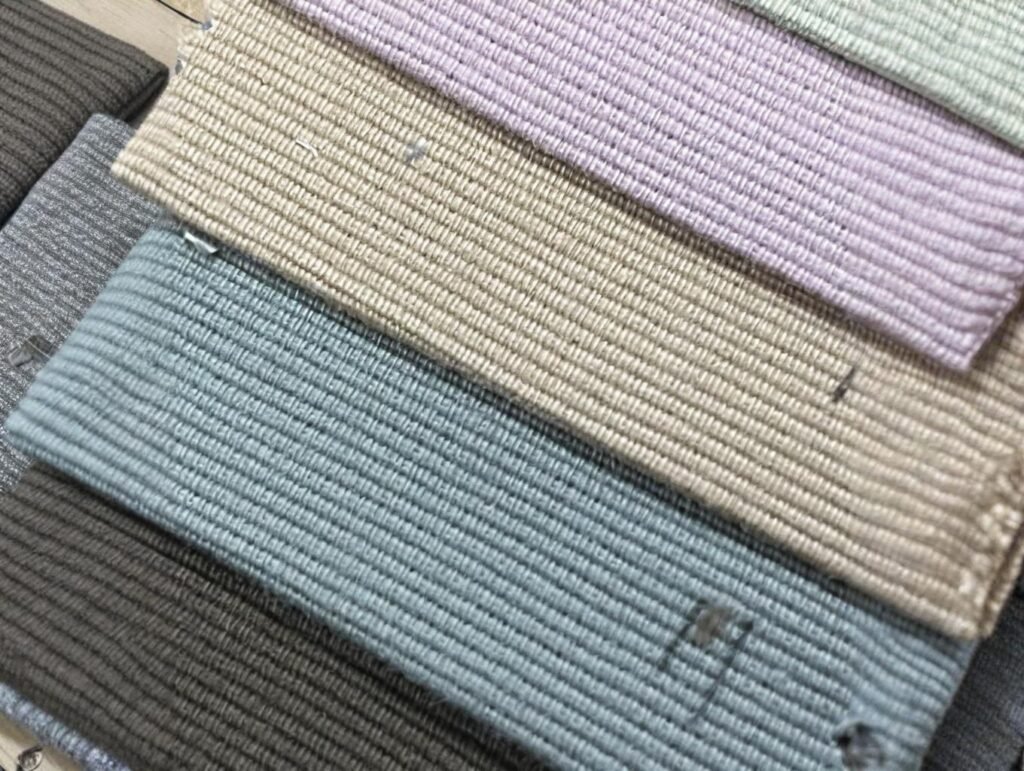
With increasing environmental awareness and the growing demand for breathable materials, both eco-conscious businesses and industrial users are turning to fabrics that balance comfort, performance, and sustainability. Canvas and nylon are two popular choices, but each fabric has distinct benefits and drawbacks in terms of breathability, sustainability, and overall environmental impact.
Breathability Comparison
Breathability is crucial when considering materials for products that will be worn or used in environments where moisture control is a priority—such as workwear, outdoor gear, or home furnishings.
| Fabric Characteristic | Canvas | Nylon |
|---|---|---|
| Air Permeability | High (especially untreated canvas) | Low to none |
| Moisture Wicking | Moderate | Low |
| Sweat Management | Excellent for garments | Poor |
| Comfort in Hot Climates | Preferred | Traps heat and moisture |
Canvas Advantage:
- Canvas allows better airflow than nylon, making it an excellent choice for summer clothing, outdoor gear, and workwear in hot or humid environments.
- The natural fibers in canvas fabrics allow moisture to wick away, keeping the user more comfortable than synthetic materials like nylon, which traps heat and retains moisture.
Real-World Example: A construction company in the U.S. transitioned from polyester to 12 oz canvas aprons for their workers. Not only did the workers report less sweating and better breathability during long shifts, but the canvas aprons lasted longer and could withstand repeated washing, reducing replacement costs.
Sustainability Profile
Sustainability plays a significant role in consumer purchasing decisions, especially as industries face stricter environmental regulations. Canvas—particularly organic cotton canvas—stands out as a more eco-friendly choice compared to nylon, which is petroleum-based.
| Environmental Factor | Canvas | Nylon |
|---|---|---|
| Source Material | Natural (cotton/linen) | Petroleum-based (polyamide) |
| Biodegradability | Biodegradable over time | Non-biodegradable |
| Recyclability | Possible if uncoated | Possible, but energy-intensive |
| Microplastic Shedding | None | Yes, especially during washing |
| CO₂ Emissions (production) | Lower (natural fiber processing) | Higher (chemical synthesis process) |
Canvas Sustainability Advantage:
- Cotton canvas is derived from natural fibers, making it biodegradable and recyclable. In contrast, nylon is synthetic, made from petroleum, and non-biodegradable.
- Canvas is often associated with low environmental impact when sourced responsibly, such as organic cotton or recycled fibers.
Certifications to Look For:
- GOTS (Global Organic Textile Standard) for organic cotton canvas
- OEKO-TEX® Standard 100 for chemical-free processing
- FSC (Forest Stewardship Council) for eco-friendly packaging options
- REACH Compliance for eco-friendly coatings
Real-World Insight: A Swedish outdoor apparel company switched to 12 oz GOTS-certified organic cotton canvas with PU backing for their travel duffels. This switch aligned with their green brand story, and the products received higher customer satisfaction due to better breathability, leading to an 18% decrease in returns—mainly from complaints about heat retention in their previous synthetic bags.
When to Prioritize Canvas for Breathability and Sustainability
- Custom aprons or workwear designed for hot, dry climates where breathability is essential.
- Camping gear and sleeping bags that need temperature regulation for warm environments or tents in hot climates.
- Eco-conscious brands looking for natural materials for promotional products, especially in markets like California or the EU, where environmental standards are increasingly strict.
When Nylon Is Still Necessary
Despite canvas’s superior breathability and sustainability, nylon has distinct advantages in specific applications:
- High-performance outdoor gear (e.g., paragliding wings, ultra-light backpacks) where water resistance and low weight are paramount.
- Industrial chemical environments or military applications where strength and tear resistance outweigh comfort.
- Long-term submersion or high rainfall scenarios, such as waterproof jackets or dry bags.
- Cold, wet environments where nylon’s moisture resistance is more effective in preventing wet insulation than canvas.
How Do Canvas and Nylon Compare in Terms of Weight, Thickness, and Flexibility?
The weight, thickness, and flexibility of a fabric are crucial factors in its ease of manufacturing, shipping logistics, comfort, and handling. These properties significantly influence stitch behavior, foldability, and how well a fabric can maintain its shape.
Material Weight Comparison
Canvas tends to be heavier and thicker than nylon, which provides more structure but less compressibility. Conversely, nylon’s lightness and flexibility make it ideal for lightweight, compact gear but less effective for rigid applications.
| Fabric Type | GSM Range | Typical Use |
|---|---|---|
| Lightweight Canvas | 200–300 GSM | Apparel, bags, art canvas |
| Midweight Canvas | 300–450 GSM | Tents, tool bags, upholstery |
| Heavyweight Canvas | 500–650+ GSM | Industrial wraps, tarps, covers |
| 210D Nylon (PU-coated) | ~150–200 GSM | Lightweight rain gear, backpacks |
| 420D Nylon | ~250–300 GSM | Luggage, tactical bags |
| 1000D Nylon | ~400–500 GSM | Gear straps, heavy-duty bags |
Thickness and Packability
| Handling Property | Canvas | Nylon |
|---|---|---|
| Foldability | Moderate (depends on weight) | Excellent |
| Compressibility | Poor (holds shape) | Excellent |
| Stitch Behavior | Holds stitch very well | May slip or curl if not stabilized |
| Surface Grip | High (non-slip) | Low (slippery when wet or waxed) |
Canvas Advantage:
- Canvas is less compressible but offers superior grip, making it ideal for products like tool bags or aprons where grip and structure are important for usability.
- Nylon, being lighter and more flexible, is more packable and easier to fold or compress, making it the preferred choice for backpacks, travel gear, or rain covers.
Flexibility and Drape
- Canvas: More rigid, structured, and has a textured surface. Untreated canvas can feel stiff, while treated canvas (like waxed versions) can feel more substantial.
- Nylon: Has excellent drape and conforms easily to curves, ideal for ultralight products like lightweight jackets or packable gear.
Manufacturer Perspective
- Canvas may require industrial sewing machines with heavier needles and slower stitch speeds due to its thickness.
- Nylon, while easier on machines, often frays easily, requiring bias tape or heat sealing to finish edges cleanly.
Application Suitability by Handling Requirement
| Requirement | Preferred Material |
|---|---|
| Folding into tight storage spaces | Nylon |
| Maintaining structural shape | Canvas |
| Needing grip (e.g., apron chest) | Canvas |
| Ultralight travel applications | Nylon |
Humanized Insight
Canvas exudes a premium, rugged charm—its coarse texture, natural finish, and ability to age beautifully over time appeals to those seeking authenticity and quality. Conversely, nylon has a sleek, technical feel and is efficient in its performance but lacks the tactile richness of canvas. Your choice between canvas and nylon should reflect how the product will be used, the desired brand image, and the specific environmental conditions the product will face.
Do Treated Canvas and Coated Nylon Fabrics Meet Industry Safety Standards?
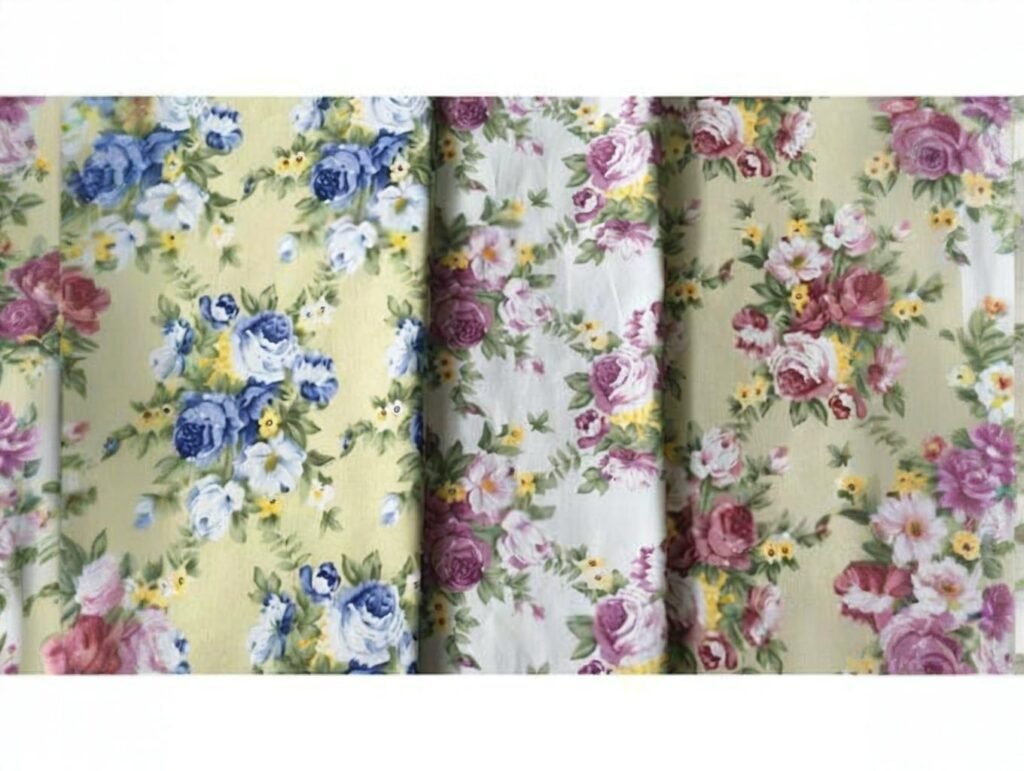
In industrial applications where safety is paramount, selecting fabrics that comply with various industry safety standards is critical. Both canvas and nylon can be treated to meet specific safety regulations such as flame retardancy, waterproofing, and chemical resistance. However, each fabric has distinct advantages depending on the safety requirements and the conditions in which they are used.
Safety Standards in Industrial Applications
Compliance with safety standards is essential in sectors such as construction, manufacturing, transportation, and events. Below are some of the common industry safety standards relevant to fabric choice:
| Standard/Regulation | What It Tests | Common Application |
|---|---|---|
| NFPA 701 (USA) | Flame resistance of textiles | Tents, curtains, tarps |
| CPAI-84 | Flame retardancy for canvas tent fabric | Camping, shelter, scaffolding wraps |
| EN 13501-1 (EU) | Fire behavior classification for building materials | Construction, public installations |
| ISO 811 | Water penetration resistance | Rainwear, covers, ground cloths |
| REACH / RoHS | Chemical safety and environmental limits | Coatings and dyes |
Treatment Options by Material
Both canvas and nylon fabrics can be treated to meet the specific demands of industrial applications, ensuring that they perform safely and effectively under challenging conditions.
| Treatment Type | Canvas Compatibility | Nylon Compatibility | Notes |
|---|---|---|---|
| Flame Retardant (FR) | Excellent | Possible | Canvas chars, nylon melts without special additives |
| PU Coating (Waterproofing) | Very Compatible | Common | Used for tarps, bags, and protective covers |
| PVC Coating | Moderate | Common | Heavy coating, increases stiffness, reduces breathability |
| UV Stabilization | Excellent | Excellent | Necessary for both if used outdoors |
| Anti-Static | Limited | Moderate | More common in technical nylons |
Why Canvas Excels in Heat/Flame Scenarios
Canvas, particularly flame-resistant treated canvas, is the preferred material for industries where exposure to heat and fire is frequent. Here’s why:
- Doesn’t Melt or Drip – Unlike nylon, which melts when exposed to heat, canvas chars predictably, which makes it safer in situations where fire exposure is possible.
- Non-Melting Nature – Even when exposed to high heat or flames, treated canvas retains its structural integrity, whereas nylon may shrink or distort.
- Fire Retardant (FR) Coating Compatibility – Canvas can be easily treated with water-based FR coatings, maintaining its breathability and shape during exposure to heat.
Why Nylon Excels in Electrical/Chemical Settings
While canvas is a superior material for fire-prone and abrasive environments, nylon stands out in electrical or chemical environments for the following reasons:
- Non-Conductive Properties – Nylon is naturally non-conductive and does not carry electrical charges, making it ideal for use in electronics, cables, or industrial equipment.
- Chemical Resistance – Nylon, when treated with certain coatings, can offer resistance to acids, oils, and greases, making it well-suited for environments where chemical exposure is common.
- Lightweight Performance – Nylon is lightweight and more flexible, which makes it ideal for gear bags or protective covers used in electrical maintenance or technical applications.
Case Study – FR Canvas vs. FR Nylon for Welding Screens
A German fabrication workshop needed flame-resistant barrier curtains for mobile welding stations. They tested both 18 oz FR-treated canvas and 1000D FR-coated nylon.
- Nylon Version: Although it passed the flame resistance test, the nylon melted when briefly exposed to molten slag during welding.
- Canvas Version: Despite being slightly heavier, the canvas charred predictably, maintained its form, and was more resilient to heat exposure.
Final Decision: The workshop chose canvas for its predictable performance under heat, durability, and reparability. It provided a safer, more cost-effective solution for the long-term use of welding screens.
Which Material Should You Choose for Your Specific Heavy-Duty Manufacturing Needs?
When selecting between canvas and nylon for heavy-duty applications, the choice largely depends on the environmental factors and performance criteria of the specific use case. Both materials can be treated to meet industry standards, but one may offer superior performance based on the conditions it will be subjected to.
Decision Matrix for Canvas vs Nylon
| Use Case / Requirement | Recommended Material | Reason |
|---|---|---|
| Industrial aprons or workwear | Canvas | Breathable, flame-resistant, washable |
| Ultralight gear bags or tactical straps | Nylon | High strength-to-weight ratio, flexible, lightweight |
| Tents for hot/dry climates | Canvas | Breathable, reduces condensation, cooler interior |
| Rain tarps or marine covers | Nylon (PVC-coated) | Better waterproofing and long-term UV resistance |
| Welding curtains or spark barriers | Canvas (FR-treated) | Won’t melt, withstands thermal impact |
| Truck tarps or construction wraps | Either (coated) | Depends on budget, weight preference, environmental load |
| Eco-conscious product lines | Canvas | Biodegradable, less synthetic processing |
| Multi-season outdoor furniture | Coated Canvas | Aesthetic, weather-resistant, mold-inhibiting |
Real Buyer Insight:
A Canadian client developing hybrid tactical gear kits used canvas for outer pouches (for durability and branding aesthetics) and nylon webbing inside for MOLLE-compatible strap systems. This hybrid approach offered the best of both worlds: canvas for visual identity and nylon for functional performance in the field.
Critical Considerations When Finalizing Your Choice
Before selecting between canvas and nylon, here are the key factors you should consider:
- Exposure to Water, Flame, or Chemicals: Does your product need to withstand heat, rain, or chemical exposure?
- Aesthetic & Feel: Is appearance and texture part of the product’s value proposition (e.g., premium appeal)?
- Environmental Impact: Is sustainability, biodegradability, or eco-conscious production a priority for your brand?
- Manufacturing Compatibility: What kind of machinery and processes will be used in assembly or sewing?
Canvas or Nylon? The Right Fabric Depends on the Right Fit
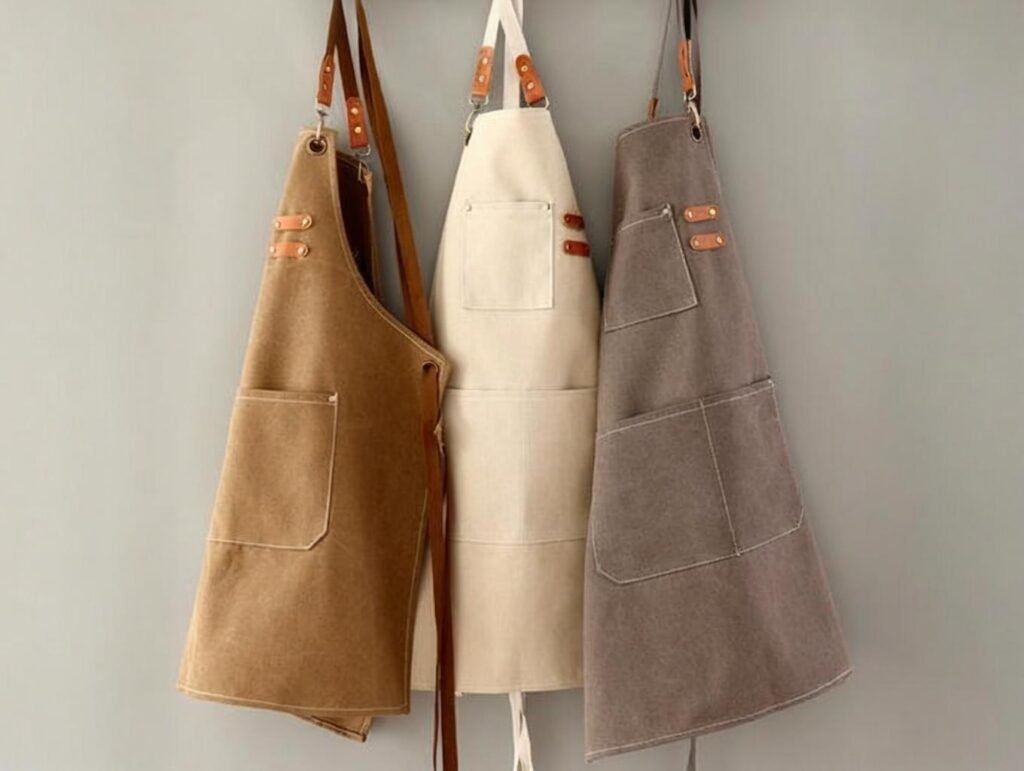
Choosing the right fabric isn’t a matter of which material is better overall—it’s about matching the material to the application.
- Canvas offers long-term durability, abrasion resistance, and breathability, making it ideal for rough outdoor applications and fire-prone environments.
- Nylon, with its high tensile strength, waterproofing, and flexibility, excels in lightweight, high-performance applications where waterproofing and chemical resistance are paramount.
At SzoneierFabrics, we offer customized solutions for both canvas and nylon fabrics, ensuring you choose the right material for your needs while maintaining industry safety compliance. Whether you need flame-resistant canvas for welding, waterproof nylon for outdoor gear, or a hybrid fabric solution, we provide low MOQ, fast sampling, and expert support to help you bring your product to market.
Contact SzoneierFabrics today to request free swatches, technical specs, or a tailored quote for your next industrial project. We are your trusted partner for custom fabric solutions that meet safety standards, functional needs, and branding goals.
